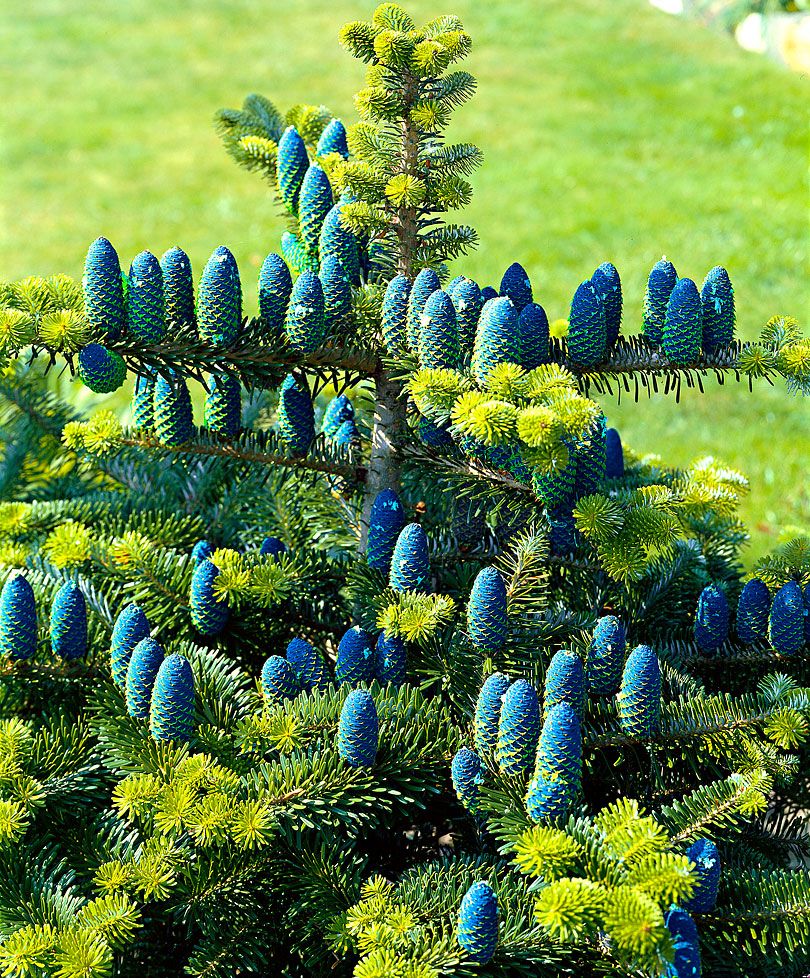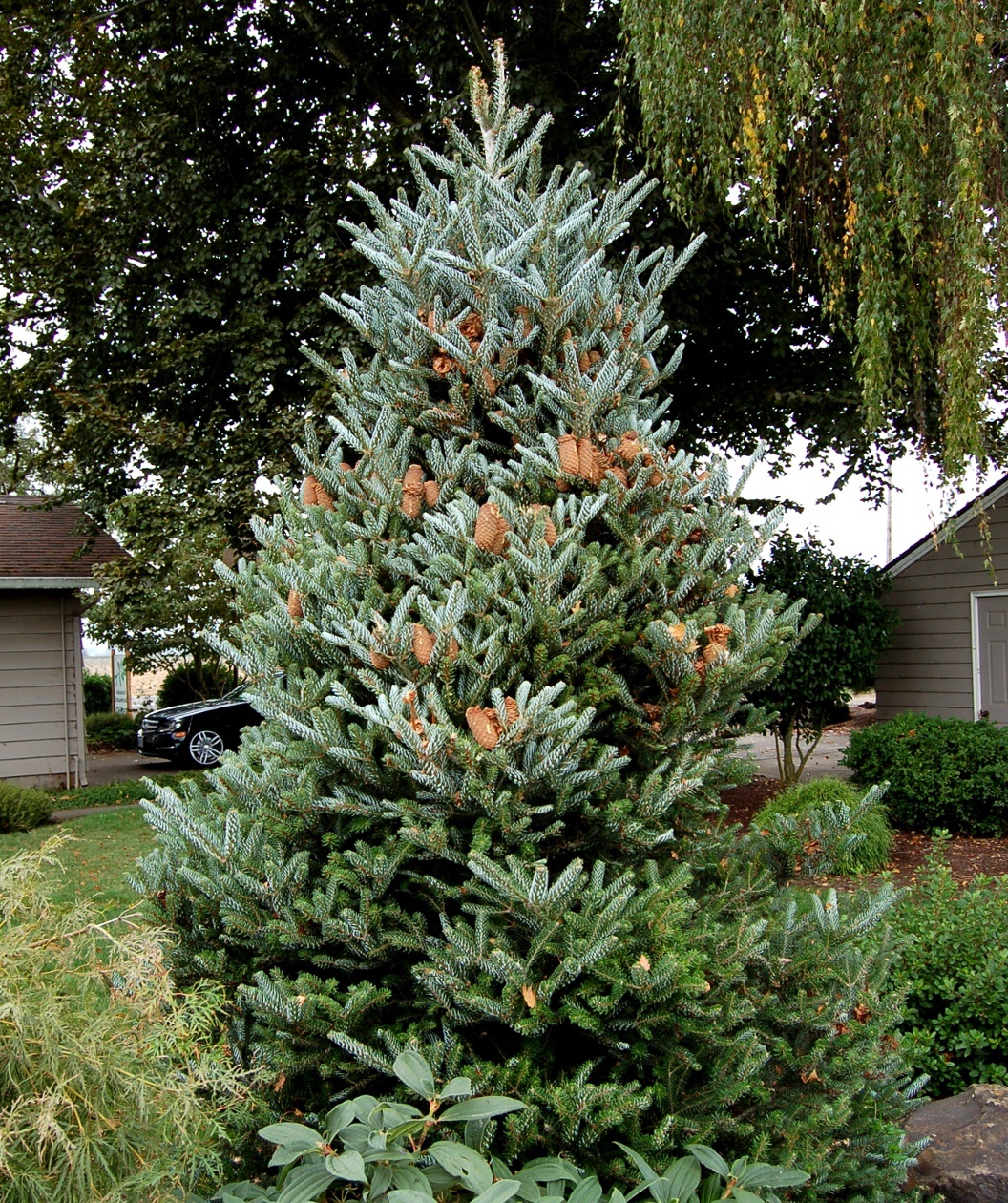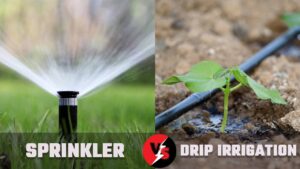
Korean fir can rightfully be called beauty with excellent decorative data. From the plant’s name, it becomes clear that Korea is its homeland, namely, its southern highlands. This is an evergreen tree with a dense, luxurious crown. Cones have a somewhat original appearance, significantly different from spruce in their cylindrical shape and violet-purple palette. The undeniable advantages include a persistent tart aroma, which has healing properties – this is a real storehouse of substances that kill pathogenic microbes.
The Main Types of Korean Fir

To date, about 50 varieties of Korean fir are known, which represents dwarf decorative varieties, the height of which does not exceed half a meter, and high. They are united by pyramidal crown shapes, spreading branches with oval cones. The following varieties stand out from the most cultivated:
Aurea is a small tree with a canonical crown. Young shoots are golden, and adult needles have a rich green color. A medium-sized fir reaches a height of one and a half meters by the age of ten.
Piccolo is an even smaller variety, the height of the trunk of which does not exceed 35 cm at maturity, but the crown grows up to 1.5 m. A plant is an excellent option for the landscape of alpine hills.
Brevifolia is a slow-growing genus that reaches 1 m at the age of ten. Lush twigs boast shiny green needles and small purple cones.
Taiga is a miniature creeping variety. It is pretty in demand in horticulture. The tree’s height does not exceed 1/3 m, and the crown branches out in diameter a little more than half a meter. The plant has an original bright green color with a noticeable bluish tint.
The Diamond is one of the most valuable relict crops. The plant is a small cushion-shaped tree with a mixed palette – the upper part is covering with green needles, and the lower one is silvery.

In addition to the varieties considered, many other species are grown in European countries, for example, Tordis, Pancake, Blue Hit, etc.
Proper Care of Korean Fir

It is not at all difficult to create favorable conditions for the plant. It is crucial to choose a suitable site for planting, monitor the state of the soil, its moisture content, and periodically loosen it. To form a correct crown in Korean fir, it is necessary to remove damaged and dried branches in time. Observance of some of the rules given below will help to avoid diseases.
Lighting
Korean fir belongs to rather shade-tolerant crops, but it is still better to plant it in well-lit areas. The plant needs partial shade in the first years of life, and then it can be transplanted to open areas without being afraid of being in direct sunlight.
Temperature
Although native to the tropics, its growth high in the mountains has impacted its ability to withstand large seasonal temperature fluctuations. Most plants are frost-resistant, can tolerate winter frosts down to -28C, and some even up to -35C. The exception is young specimens, which are sheltered for the winter for the first few years.

Humidity
The plant feels more comfortable in conditions of high humidity. Therefore in summer, when there is no rain for a long time, in addition to watering, it is necessary to moisten the crown at least once a week. Swampiness of the soil harms the development of culture. To avoid this, it is required to provide a high-quality drainage layer during planting and mulch the soil.
Watering
Korean fir watered periodically when the topsoil begins to dry out in the autumn and spring periods, but in general, the crop has enough rainfall. In hot summer, abundant watering of 20 liters of water per copy every week is necessary. Also, a young plant needs more frequent drinking during the first month after planting. At this time, it is watered every day.

Fertilizers and Feeding
The first two years after planting, Korean fir does not need additional fertilizing – it has enough nutritious soil. In the future, every spring, it is necessary to apply mineral fertilizers in a complex composition to the soil. To accelerate the growth of the plant to some extent, it is necessary to sprinkle the top layer of the soil with mulch, with a layer of about 5 cm, with the addition of peat and sawdust.
Pests and Diseases
A frequent cause of Korean fir disease is sudden temperature jumps, when needles fall off, loss of decorativeness. Sometimes this even leads to irreversible consequences. The plant can comprehend different types of rot arising from improper living conditions.
Pests cause much more damage to the plant, for example, aphids and their larvae, which feed on coniferous sap. A white bloom manifests Hermes disease on the needles. Also, moths and silkworms are dangerous, in the destruction of which the treatment of the plant with insecticides helps.

How to Transplant Korean Fir
The change of place of residence of the plant is carried out in the spring, when the buds have not yet blossomed. To do this, it is necessary to prepare a planting pit in advance, no deeper than 80 cm. A couple of buckets of water are poured into it, and a drainage layer of crushed stone or crushed bricks is poured. Separately, you need to prepare the soil by mixing clay, peat, sandy and humus masses, sawdust, and soluble mineral fertilizers are also added here.
With this soil, the planting pit is filled half the depth, and a low mound is formed on which the tree is installed. The roots should be carefully spread around the mound and covered with earth. In this case, the root collar must remain visible above the ground. The planting site is thoroughly watered and mulched.
Reproduction
Korean fir reproduces safely at home. To do this, use one of several methods.
Korean Fir Propagation by Seeds
Growing fir seedlings from seeds are one of the most challenging ways. First of all, you must obtain planting material, and often the seeds fly out of ripe cones. It is necessary to take the still unopened cone, dry it, extract the seeds and send them for stratification in a cold place. The material is sown in the first decade of April, and the bed is covered with foil, creating a greenhouse. When the first shoots appear, you must remove the protection. The garden bed is regularly watered, weeded, and loosened. A transplant to a permanent place is made in a year.

Reproduction of Korean Fir Cuttings
Cutting Korean fir is a reasonably popular method among gardeners, although it has a long duration of root formation. Annual shoots no longer than 8 cm to choose as the material. They must be plucked so that a fragment of the mother wood (heel) remains.
Before planting, the cuttings are treated with a foundation to exclude possible infections. It is also advisable to sterilize the soil mixture for half an hour in the oven. Cuttings planted in a container are covered with foil or glass. The plant bed is moved to a basement with a low temperature for the wintering period, and in the spring, it is left in the fresh air. Rooting will occur no earlier than in the second year.

Reproduction of Korean Fir by Layering
This method is considered one of the simplest. The bottom line is that you need to slightly dig in one of the tree’s lower branches and fix it in a prepared trench. Rooting will take place within two years. Interestingly, in this way, the fir can reproduce without human intervention – it is enough for the twig to come into contact with the ground. The disadvantage of this method is the risk of losing the cone-shaped crown of the newly-made culture.
Korean fir has a special place in landscape design. Its characteristics, such as slow growth (about 5 cm per year) and decorativeness at any time of the year, make it possible to preserve the desired landscape compositions for a long time. Its various varieties are perfect for landscaping suburban adjoining territories, and they are successfully combined with both coniferous and deciduous trees and shrubs.






